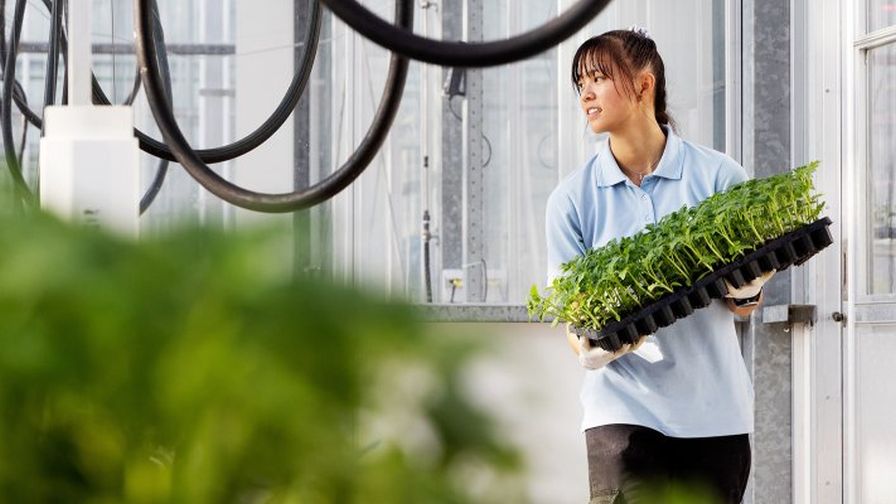
Kassim the Game higher education | Wageningen University and Research (WUR)
How do you grow crops in a greenhouse as efficiently as possible? That’s the key question in Kassim the Game. This application tool was developed by Wageningen University & Research (WUR) and has been used in higher education for several years. Additionally, Kassim has been made available for a limited time period for a wider audience to explore.
“You fill in some numbers, click continue, and then check your crop two weeks later. You continue doing that until the end of the growing season. And that’s all there is to Kassim the Game,” says Gert-Jan Swinkels, Research Associate in Greenhouse Climate and Energy at WUR. “But if you want to score a lot of points, you do need to have some idea of what you’re doing. How many energy screens do you place in the greenhouse? Will you be using lighting, and if so, what kind of lamp and at what intensity? And what is the optimal temperature and humidity, given the costs of natural gas and electricity? To help players, each box to be filled in has an accompanying text with some notes.”
How to Efficiently Manage a Greenhouse
“Kassim the Game has been used in higher education for several years,” says Swinkels. “It’s a fun and interactive tool to teach students how to grow a crop in a greenhouse in an energy-efficient way. As part of the Autonomous Greenhouse Challenge, we are now making the game available to the public so that everyone can start testing their growing skills. Each participant works under the same conditions, such as the outdoor climate. You make the difference by choosing, for example, the temperature setting, humidity, and crop management, such as the number of stems per plant and fruits per cluster. Eventually, this produces a total score, an average of the yield and costs you incur.”
Kaspro: The Model Behind Kassim
Kassim the Game runs on Kaspro, a simulation model developed at WUR in the 1990s. “Kaspro simulates the climate in a high-end horticultural greenhouse and the associated energy consumption,” says Swinkels. “New scientific insights, technological developments, and knowledge from practice enable us to continuously update and improve Kaspro. In recent years, for example, there has been a lot of attention for energy-efficient dehumidification and alternative energy sources. Apart from being used for Kassim the Game, the model is also used in our research projects and by companies in greenhouse horticulture. In addition, the Autonomous Greenhouse Challenge teams used Kaspro to develop their algorithm.”
Education and Enjoyment from Kassim the Game
Kassim the Game‘s limited period of free use is coming to a close next week. At the end of that period, the person with the highest score in the ranking wins the game. “Besides eternal glory, the winner will receive a small token,” says Swinkels. “But it’s mainly for fun and to learn from it. The nice thing is that you get a very detailed overview showing the effects of your choices and the costs. You can then compare them to the winner, unless that’s you, of course. And if you are a grower, you can then apply the lessons learned in practice.”

